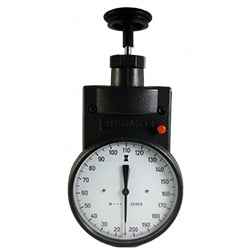Opening the Keys of Tachometers: Every Little Thing You Required to Learn About This Important Instrument in Your Car
Understanding the intricacies of tachometers can provide valuable understandings right into your car's performance and upkeep needs. From determining engine speed to figuring out the data it offers, tachometers act as a vital tool for vehicle proprietors and lovers alike. By deciphering the enigmas behind this crucial instrument, you can unlock a wide range of info that can improve your driving experience and ensure the long life of your car.
Importance of Tachometers
The value of tachometers depends on their ability to give vital real-time data concerning an engine's rotational speed, permitting specific tracking and upkeep of machinery. By gauging the transformations per minute (RPM) of an engine's crankshaft, tachometers use valuable understandings into the engine's efficiency - tachometer. This information is vital for ensuring that the engine runs within its optimal variety, avoiding prospective damages from over-revving or underperforming
Tachometers play an important duty in helping drivers and technicians find any anomalies in the engine's rate, which might suggest issues such as fuel inadequacy, mechanical problems, or extreme pressure on the engine. By quickly determining these concerns through tachometer readings, upkeep can be performed proactively, stopping costly repair work and downtime over time.
Moreover, tachometers are especially critical in high-performance vehicles and machinery, where accurate control over engine rate is essential for optimal operation. Racing automobiles, aircraft, and industrial equipment count on tachometers to supply peak efficiency while maintaining safety standards. In essence, tachometers are not just instruments for determining speed however indispensable tools for guaranteeing the smooth and effective operation of engines across different applications.
Exactly How Tachometers Step Engine Speed
Using sensors that detect the regularity of electric pulses produced by the engine's ignition system, tachometers accurately gauge the rotational speed of an engine. By keeping track of the price at which these pulses are gotten, tachometers provide real-time responses on exactly how fast the engine's crankshaft is revolving per minute, generally described as changes per min (RPM)
The tachometer's sensing unit, frequently attached to the engine's ignition coil or ignition system wires, gets the electrical signals generated each time a cylinder fires. These signals are after that converted right into RPM readings presented on the gauge or tool cluster within the vehicle driver's view. Tachometers can be analog or electronic, with modern automobiles commonly including electronic screens for specific and click to read immediate RPM analyses.
This info is critical for motorists to recognize the engine's performance, stop over-revving, optimize gear changing, and ensure effective gas consumption. By precisely gauging engine speed, tachometers play a crucial duty in helping chauffeurs run their vehicles safely and effectively.
Analyzing Tachometer Analyses
Having a clear understanding of exactly how tachometers determine engine speed establishes the structure for efficiently interpreting the RPM analyses showed. Interpreting tachometer analyses is critical for ideal car performance and engine wellness. When the engine is idling, the tachometer needle commonly relaxes around 600-1000 RPM, depending on the car.


Tips for Making Use Of Tachometers Successfully
To enhance driving performance and optimize engine efficiency, what key approaches can be executed for effectively utilizing tachometers? Tachometers are essential devices that offer real-time comments on engine rate, enabling vehicle drivers to make informed choices for better performance - tachometer. Below are some suggestions for making use of check out this site tachometers effectively:
Understanding Ideal RPM Variety: Acquaint on your own with the optimal RPM (Revolutions Per Minute) variety for your lorry. Maintaining the engine within this range can enhance fuel effectiveness and lengthen the engine's life-span.
Moving Gears at the Right Time: Use the tachometer to determine the best time to change equipments. Purpose to read more shift equipments when the RPM gets to the optimal range for the next equipment.
Keeping Track Of Engine Stress: High RPMs for prolonged periods can strain the engine. Keep an eye on the tachometer to stop over-revving, particularly during acceleration or when carrying heavy tons.
Tachometers and Vehicle Maintenance
When thinking about vehicle maintenance, tachometers play an essential function in keeping an eye on engine efficiency and spotting prospective concerns. Tachometers offer essential information on engine rate, enabling chauffeurs and mechanics to ensure that the engine is operating within the advised RPM range.
In enhancement to finding potential problems, tachometers can likewise aid in optimizing gas efficiency. By maintaining the engine rate within the ideal array, chauffeurs can improve their gas mileage and lower gas intake. This not just benefits the vehicle driver's wallet however also adds to environmental preservation by lowering harmful emissions.
Conclusion
